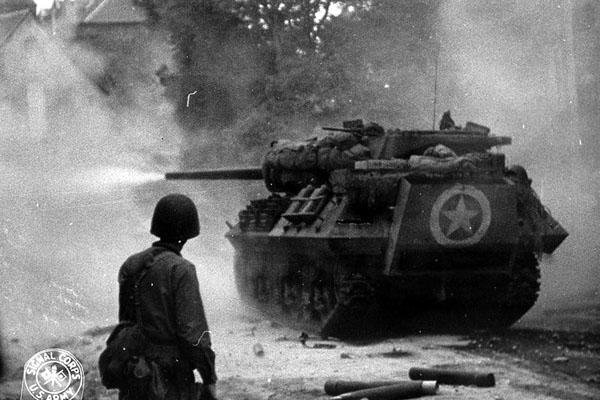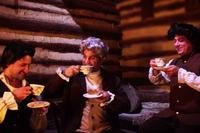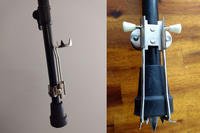This article was sponsored by General Motors.
Harley Earl had a large idea. As a member of General Motors' Styling Section -- a part of the company that became the "Camouflage and War Service Section" in the wake of the Japanese attack on Pearl Harbor -- he was a man interested in colors and contours. As the nation was mobilizing for war, Earl went to Ottawa to talk with friends in the Royal Canadian Air Force, whose men had fought for two years over the battlefields.
"You've got pilots coming back here for a rest after the African campaign, haven't you?" he asked. "Would you mind letting them come down if we paid the expense and let them lecture to us in our auditorium? I'm going to start a camouflage school, and I want to find out some things."
The Canadian pilots came and told what they could about the way the enemy disguised its towns, buildings and airfields. The bits and pieces of dependable information in American channels were assembled. Locks were changed on the doors, and the section started headlong into studies of camouflage, with designer Robert Bingman in charge.
It was an ambitious, all but unprecedented undertaking. The Research Building auditorium, accustomed to housing sleek new automobile designs, was ruthlessly made over inside of a month into what seemed to be an enormous hodgepodge of miniature terrain models, of cities and roofs and fields -- and stepladders.
Modelmakers used their experience with scale-size automobiles to build duplicates of GM plants and 3D airviews of large metropolitan centers. Then other teams came in to experiment with ways to disguise those replicas of cities and countrysides. Colored cloth was used, paint effects, blending of backgrounds, all the techniques that were known and some that hadn't been imaged before -- like a structure that looked like a floating island, intended to conceal a ship.
That was where the stepladders came in. Once a camouflage effect was developed, the innovators could climb the ladders and look through reducing glasses that gave the mock terrain the size and appearance it would have from altitudes as high as 20,000 feet.
It was evident from the earliest phases of the mobilization that the machines of war would require accoutrements that the section was eminently qualified to produce. Up and down the line, engineering shops to training schools to battlefield maintenance, there came calls for exploded drawings of mechanisms of all sorts; and Styling was a past master in visual demonstration. Artists, engineers and others were assigned to the task of turning complex pieces of equipment into understandable diagrams on printed pages. Wood and metal workers started fabricating cutaways of such pieces.
Confidential and secret items passed across the desks of Section employees. GM folks knew of advanced bomb sights before many Air Corps officers did; they worked on them while they were still whispers in high places. They handled guns of all kinds, timing devices and a control mechanism, along with prosaic items such as truck carburetors.
Designers, meanwhile, were focused on vehicular weapons. The imaginations that had served so well on civilian automobiles were turned loose on armament. Sketches began to flow from artists' pencils.
The shining example, and a great credit to the Section, was the Wildcat tank destroyer. It came from the drawing board of Art Ross, later to head the Cadillac design studio. Ordnance was fascinated with the look of the Wildcat, the way its turret could be swung and the vertical traverse of the gun. That Wildcat was ordered into production; Buick built thousands of them as the war progressed.
There came a small echo months later of the Styling Section's success in creating the Wildcat idea. The first tank destroyers of that type went to Camp Hood, Texas, for training under Maj. Gen. Andrew D. Bruce. A call came to Harley Earl from an aide to the general. "We have the Wildcat you fellows designed," he said. "Now we'd like an armband for an outfit like ours whose mission is to use it to crush the tank."
So in addition to all the other work it was doing for the war effort, the section designed the official patch for the tank destroyer troops -- a panther crushing a tank in its mouth.
For more on GM and its contributions to the U.S. military throughout history, visit the GM Military History page.
Find the Right Veteran Job
Whether you want to polish your resume, find veteran job fairs in your area or connect with employers looking to hire veterans, Military.com can help. Subscribe to Military.com to have job postings, guides and advice, and more delivered directly to your inbox.











